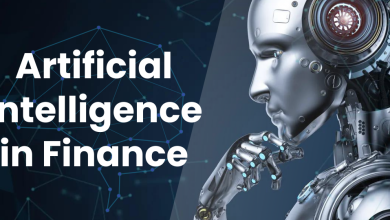
At this point, the debate around artificial intelligence’s potential value to businesses is largely settled. Leaders now grapple with a more pressing issue: how to integrate and scale AI within their enterprises effectively.
That critical topic took center stage at the AI Leadership Summit held in London in June, coinciding with the launch of Uniphore’s Business AI Cloud. The summit attracted technology executives from finance, healthcare, telecom, and other sectors, spotlighting real-world AI implementation and operational challenges rather than theoretical demonstrations.
Persistent Bottlenecks to AI Implementation
While AI pilots have become widespread in nearly every industry — from finance to healthcare to logistics — many fail to make it past the proof-of-concept stage. Not due to lack of interest, but because of infrastructure friction, regulatory constraints, and unclear ownership across business and technical teams.
Umesh Sachdev, co-founder and CEO of Uniphore, addressed this directly during the summit. “It’s not the model that’s failing. It’s everything around it.”
Irrespective of industry, these challenges are becoming consistent across enterprise organisations:
- Legacy IT systems that aren’t built for AI workloads
- Lack of integration between AI tools and existing business platforms
- Governance processes that don’t yet match the speed of development
- Vendor ecosystems that require businesses to operate within rigid limits
Sumesh, the CEO, summed it up by saying, “It’s not the model that’s failing. It’s everything around it.”
CIOs Confront Closed Ecosystems
Recent changes in terms of service from platforms like Slack have raised alarms for CIOs and data teams. Slack, like many other SaaS providers, has restricted how external APIs can access data — making it harder for enterprises to pull their own information into new workflows.
It’s a small but symbolic example of a broader pattern. Many of the systems that businesses depend on daily (think: Google Workspace, Salesforce, ServiceNow) are increasingly closed by design. They offer convenience but limit flexibility — especially for teams trying to introduce AI that spans multiple tools and departments.
“You can’t have AI automation systems stuck in a corner,” a KPMG leader said at the summit. “If your workflows can’t talk to each other, or access enterprise data, you’re not really scaling anything.”
Emergence of Sovereign, Composable and Secure PlatformsA shift toward composable, open, and sovereign platforms
To address these limitations, companies are increasingly turning to composable architectures, platforms designed for greater modularity and flexibility. Uniphore’s recently launched Business AI Cloud, described by Sachdev as “sovereign, composable, and secure,” was prominently featured during summit discussions. The platform emphasizes modular design compatible with multiple AI models, hybrid deployments to satisfy sovereignty needs, and comprehensive agent orchestration to connect AI seamlessly across business processes.
“CIOs globally don’t want another black box,” said Tushar Shah, Chief Product Officer at Uniphore, during a presentation at the summit. “They want flexibility, transparency, and control.”
Uniphore’s Business AI Cloud was one of the more talked-about examples at the summit. While still new to market, it reflects a trend toward platforms that prioritise:
- Modular design (supporting multiple open- and closed-source models)
- On-prem and hybrid deployment (to meet sovereignty requirements)
- Agent orchestration (chaining tasks together instead of treating AI as isolated outputs)
This kind of approach aligns with what enterprise buyers are asking for: not just generative tools that spit out answers, but systems that can act, connect, and fit within strict IT and compliance frameworks.
Real-World Use Cases Driving AI Urgency
Some of the strongest examples shared at the event came from companies in highly regulated sectors. In insurance, for instance, firms are using AI to handle multi-step claims processes that involve handwritten documents, customer calls, policy lookups, and fraud detection — all coordinated by AI agents that span multiple systems.
In one demo, a claims process that used to take 5–7 days was completed in minutes. Not because of a faster chatbot, but because AI agents were embedded into each part of the business process — and crucially, governed in a way that ensured traceability and oversight.
These weren’t experiments running in a lab. They were practical examples of business AI, tailored to specific use cases and deployed across enterprise-grade infrastructure.
“It’s not enough to say your platform is AI-ready,” said Saurabh Saxena, Head of Technology at Uniphore.
“You need to be enterprise-ready. That means secure, integrated, and adaptable to the tools your teams already use.”
Key decisions CIOs now face
From multiple interviews and panels, it’s clear that CIOs and CTOs are entering a more strategic phase of their AI journey. Executives are weighing trade-offs between rapid deployment and data sovereignty, closed platforms versus open, customizable systems, and cost versus flexibility in selecting large, pre-packaged language models compared to investing in smaller, finely tuned models trained specifically on internal enterprise data.The choices they’re now weighing often come down to trade-offs like:
- Speed vs. sovereignty – Fast deployment using public cloud models vs. retaining data control through private infrastructure.
- Closed vs. open – Choosing a major platform that limits customisation vs. building a stack from interoperable tools.
- Cost vs. flexibility – Using pre-packaged LLMs vs. investing in fine-tuned SLMs trained on internal knowledge.
None of these choices are easy — but what’s changing is the level of awareness. CIOs know the wrong architectural decisions now could result in higher switching costs and security risks later.
What’s next for enterprise AI infrastructure
As the AI market matures, attention is shifting away from “what’s possible” and toward “what can we reliably deploy at scale.” That’s leading to more emphasis on open systems, modular platforms, and hybrid deployments.
Several key trends are emerging:
- Increased prioritization of hybrid and multi-cloud architectures to balance speed and data sovereignty.
- Rising emphasis on flexible, modular systems that integrate easily with existing business platforms.
- Greater awareness among CIOs regarding the hidden costs and complexities of scaling AI deployments.
Whether it’s through Uniphore’s Business AI Cloud or similar architectures from other vendors, there is an evolution happening in enterprise AI infrastructure. Buyers are moving away from rigid, siloed architectures toward modular, adaptable stacks tailored specifically to organizational needs and realities.
Whether it’s through Uniphore’s Business AI Cloud or similar architectures from other vendors, the future seems less about building monolithic solutions — and more about stitching together the right stack for each organisation.
The summit concluded with broad consensus among technology leaders: enterprises capable of embedding AI deeply into their operational workflows, not just into standalone apps, will be best positioned to generate significant business value in AI’s next adoption phase.
For additional insights and recent updates, see Uniphore’s official announcement on their Business AI Cloud launch or watch a replay of the AI Leadership Summit.




